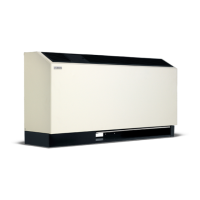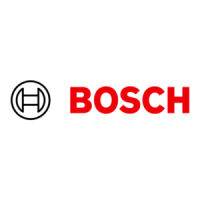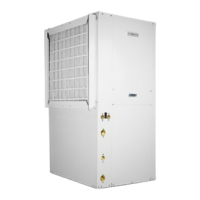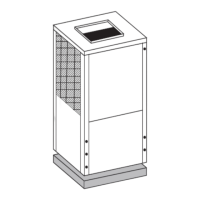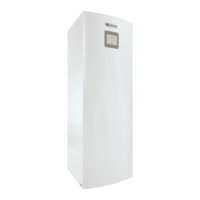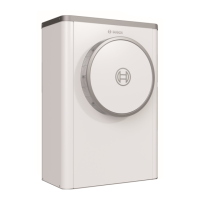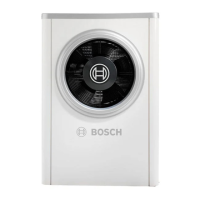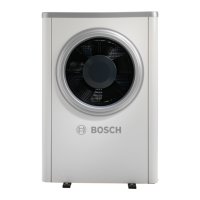Post-Installation System Checkout
8 Post-Installation System Checkout
After completing the installation and before energizing the unit,
the following system checks MUST be made:
1. Verify that the supply voltage to the heat pump is in
accordance with the nameplate ratings.
2. Make sure that all electrical connections are tight and
secure.
3. Check the electrical fusing and wiring for the correct size.
DANGER
Ensure the cabinet and electrical box are properly grounded.
4. Verify that the low-voltage wiring between the thermostat
and the unit is correct.
5. Verify that the water piping is complete and correct.
6. Check that the water flow is correct and adjust if necessary.
7. Check the blower for free rotation and that it is secured to
the shaft.
8. Verify that vibration isolation has been provided.
9. Confirm that all access panels are secured in place.
10. Verify that duct work has been properly fastened to supply
and return duct collars.
11. Make sure return air filters are positioned correctly in the
filter rack if removed during installation.
9 Pre-Start-Up
9.1 Air Coil
To obtain maximum performance, clean the air coil before
starting the unit. A 10% solution of dishwasher detergent and
water is recommended for both sides of the coil. Rinse
thoroughly with water.
9.2 Checking Scroll Compressor Rotation
Scroll compressors, like the ones used on the CL series, are
phase sensitive. When out of phase, the compressors will run in
reverse. After a few minutes of reverse operation, a scroll
compressor internal overload protection will open, activating the
unit lockout. (This requires a manual reset. To reset, power cycle
the unit.)
NOTICE
A compressor running in reverse has a noisier than normal
operation and a lower current draw than its rated value.
This means that for proper operation, the correct direction of
rotation must be ensured. The most accurate way to ascertain
this is through the use of gauges. Follow the steps below when
using gauges:
1. Connect service gauges to the suction and discharge
pressure fittings.
2. Energize the compressor.
The suction pressure should drop and the discharge pressure
should ris
e, as is normal on any start up. If the suction pressure
does not drop and the discharge pressure does not rise to normal
levels, follow the steps in 9.2.1 Correcting Direction of Rotation.
Alternative
ly, in locations with multiple units attached to the
same bran
ch circuit, where it is difficult to place pressure gauges
on all of them, and several units are determined to be phased
incorrectly:
1. Install pressure gauges and a phase rotation meter on one
system to serve as a baseline.
2. Check the remaining systems with the phase rotation meter.
3. Follow the steps in 9.2.1 to make corrections.
9.2.1 Correcting Direction of Rotation
If you determine that the entire job site has a concern with
electrical phasing, contact the utility company to ensure
phasing is corrected.
1. Turn OFF power to the unit. (Always follow your Lock-out/
Tag-out procedure.)
2. Reverse any two of the unit power leads.
3. Reapply power to the unit and verify pressures are correct.
The suction and discharge pressure levels should now move to
their norma
l start-up levels.
NOTICE
Do not use fan rotation as an indication of the unit’s phase
being correctly wired, as fans are always single phase.
There is a time delay before the compressor will start.
| 29
CL Series Heat Pumps — 8733838716 (2024/05)
